
Lithuania - narrow gauge railways
For a full scale picture, please click on the picture shown !
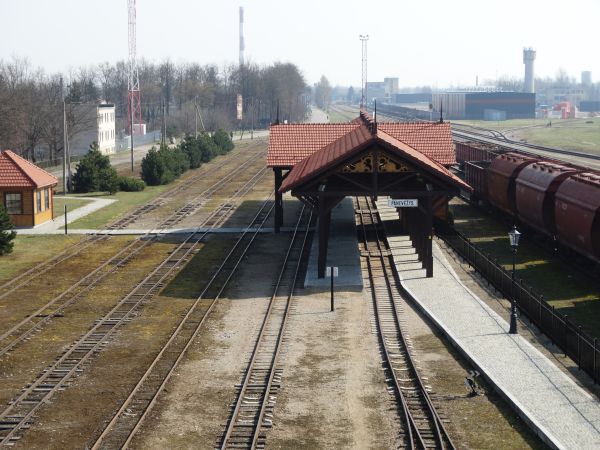
Like everywhere in former Soviet Union, also Lithuania used to have extensive networks of narrow gauge trains. But like in the
two other Baltic countries as well, beginning from the 1970s everything was closed down. The last remains of a narrow gauge
railway system was in Panevėžys, close to the Latvian border. All operational activities
north of Panevėžys were closed down in 1996 due to the desolate state of the tracks, but the narrow gauge railway was given the
status of a cultural heritage item and gradually tourist trains started to run. Aukštaitijos narrow gauge railway is now a 68 km long
750 mm gauge railway from Panevėžys to Rubikiai. With some European Union funding aid, a new narrow gauge touristic station has
been built in Panevėžys and a couple of locomotives and coaches have been restored. This picture shows the new station in Panevėžys.
Picture 2.4.2017 by Ilkka Siissalo.
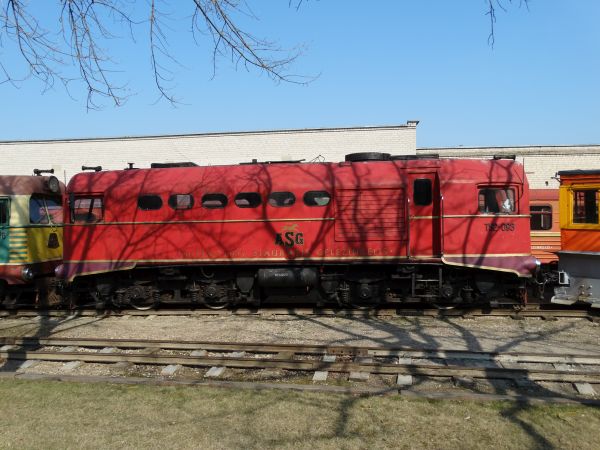
Tourist trains are today pulled by three Soviet Russian class TU2 diesel locomotives dating back to the 1960s. This is one of them.
The text "ASG" stands for Aukštaitijos Siaurasis Geležinkelis or narrow gauge railway of Aukštaitis.
Picture 2.4.2017 from Panevėžys by Ilkka Siissalo.
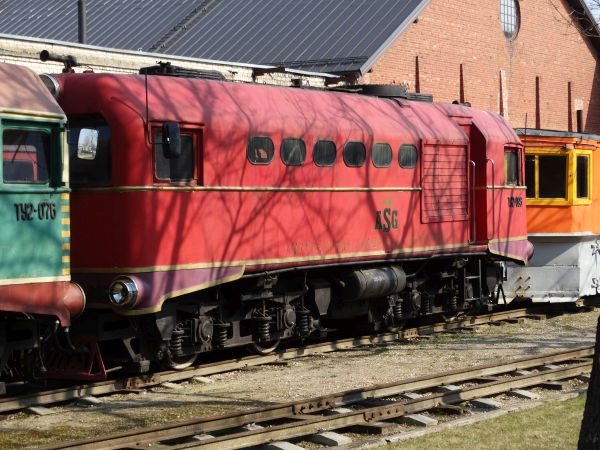
Another view of the same TU2 no. 093 as above.
Picture 2.4.2017 from Panevėžys by Ilkka Siissalo.
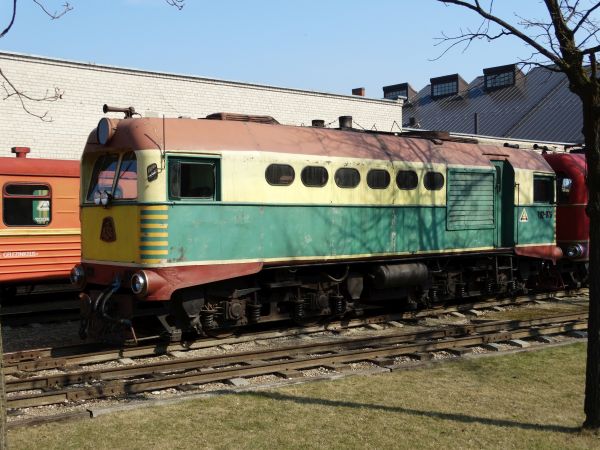
TU2 no.076 is still in its Soviet time colours.
Picture 2.4.2017 from Panevėžys by Ilkka Siissalo.
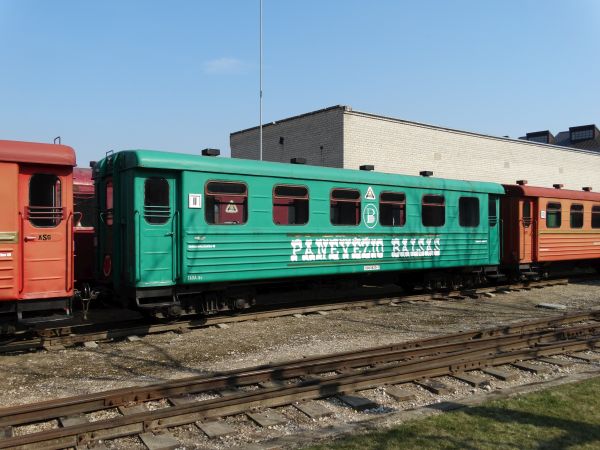
One of the tourist train coaches has been painted in the company colours of a sponsor, Panevėžio Balsas or the Balsam of Panevėžys.
Picture 2.4.2017 from Panevėžys by Ilkka Siissalo.
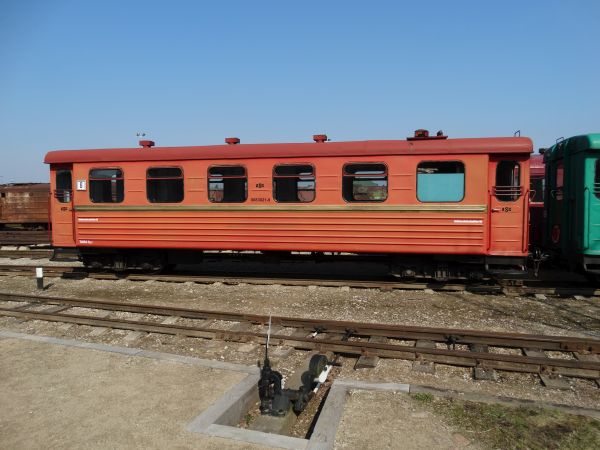
One of the tourist train coaches in "normal" ASG paintings. During Soviet socialist times these coaches were dark green.
Picture 2.4.2017 from Panevėžys by Ilkka Siissalo.
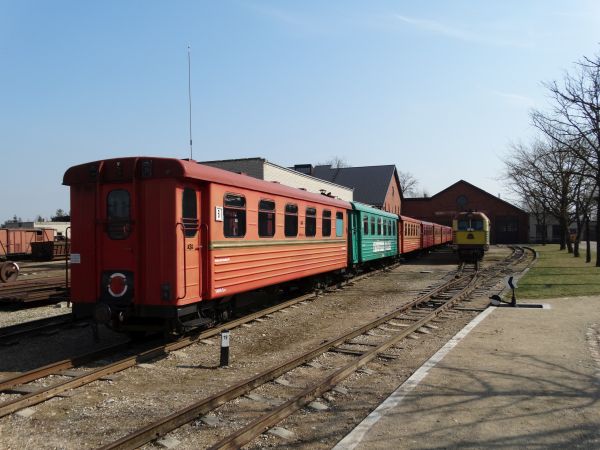
The whole ASG touristic train.
Picture 2.4.2017 from Panevėžys by Ilkka Siissalo.
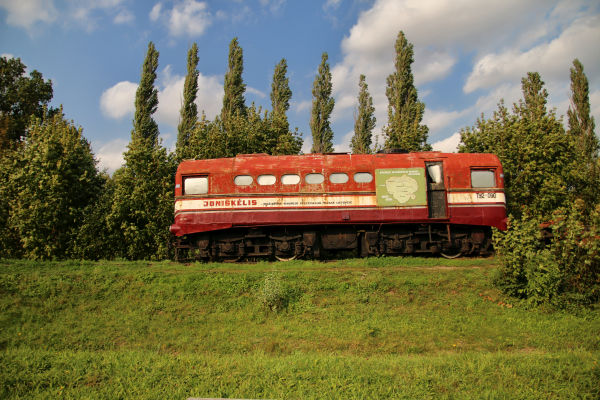
One lonely TU-2 narrow gauge locomotive plus one coach have been abandoned at a lonely destination in the middle of fields
at Joniškėlis. The narrow gauge railroad used to run from here to Panevėžys, but today it's not any more in a usable condition.
To see this exactly same locomotive in its 2007 condition as it was still Soviet style dark green and was standing all windows
covered at the Panevėžys station, see below on this same page. It was renovated, but it's again in a bad shape.
Picture from Joniškėlis 12.9.2020 by Andrius Sarkauskas.
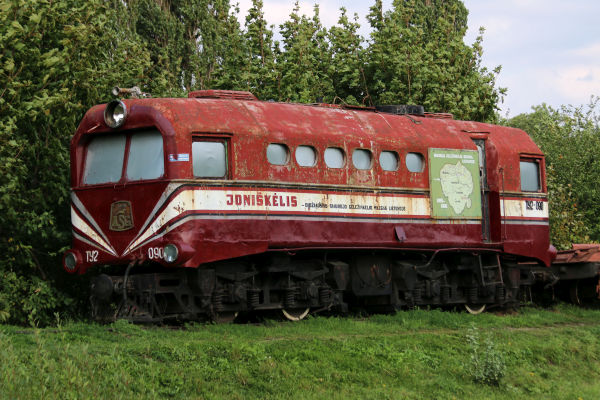
Another view of the same TU-2 no.090.
Picture from Joniškėlis 12.9.2020 by Andrius Sarkauskas.
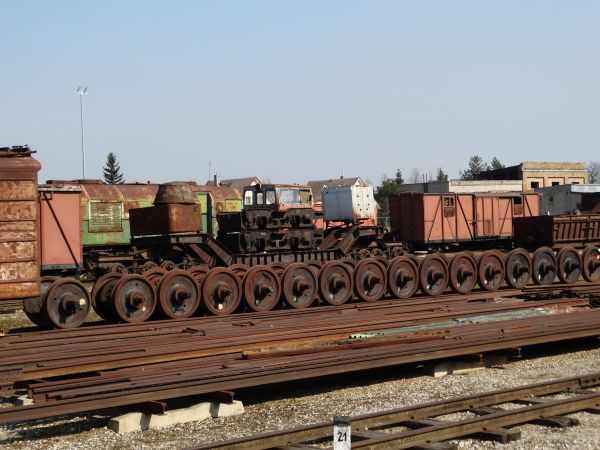
There was once a really large depot for narrow gauge trains in Panevėžys, but now much is in a desolate state. But even so,
now the area is well guarded and vandalism has been gotten under control and many of the items are being put in order one by one.
Behind the rusty coaches yet another TU2 locomotive (green) and to the right of it a TU6.
Picture 2.4.2017 from Panevėžys by Ilkka Siissalo.
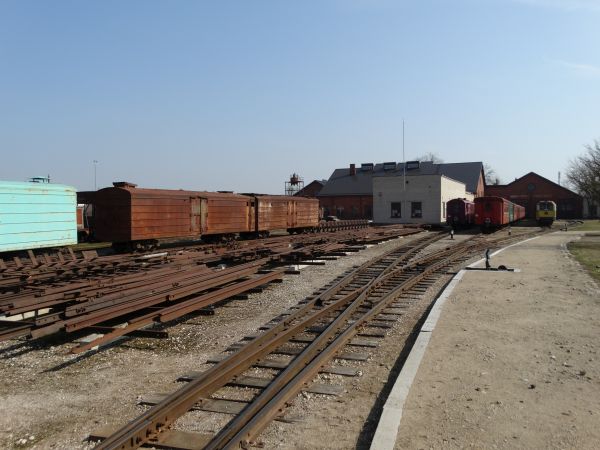
Many of the cargo wagons are in a very rusty condition.
Picture 2.4.2017 from Panevėžys by Ilkka Siissalo.
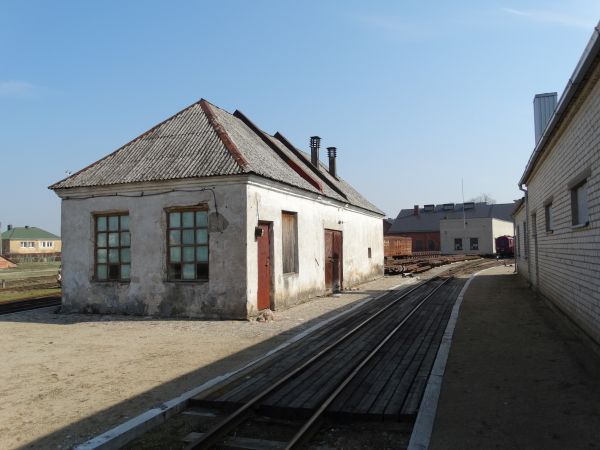
Old, now unused parts of the depot.
Picture 2.4.2017 in Panevėžys by Ilkka Siissalo.
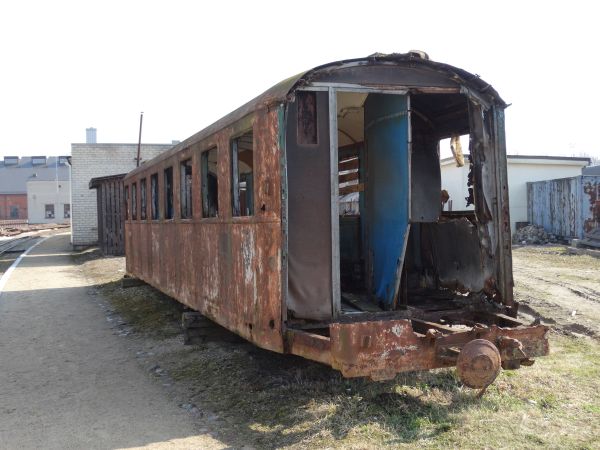
A project for some hobbyists ? This clearly has once been a Polish made Pafawag narrow gauge coach from the 1960s.
Picture 2.4.2017 in Panevėžys by Ilkka Siissalo.
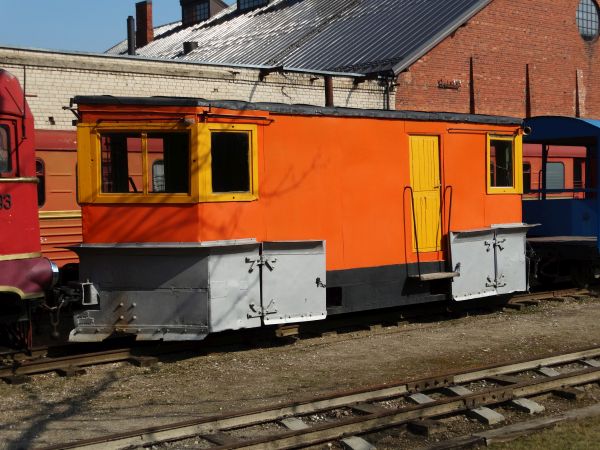
An old snowplough.
Picture 2.4.2017 in Panevėžys by Ilkka Siissalo.
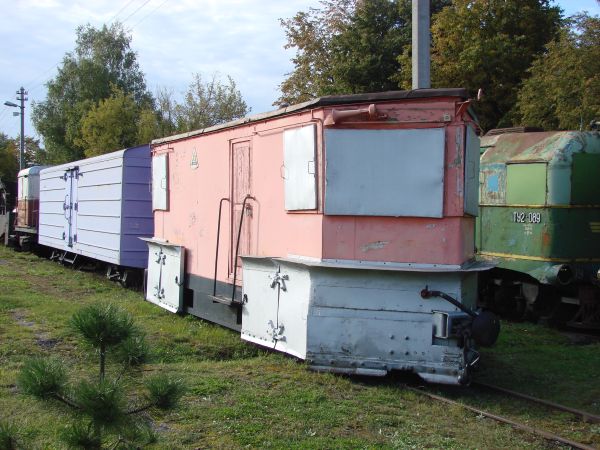
Exactly the same snowplough 10 years earlier in 2007. Nothing was moving on the narrow gauge line, all windows were covered, most
coaches and locomotives were in bad shape. It's a relief to see so much progress in the conservation of these old narrow gauge trains
during the last few years.
Picture 16.9.2007 from Panevėžys by Ilkka Siissalo.
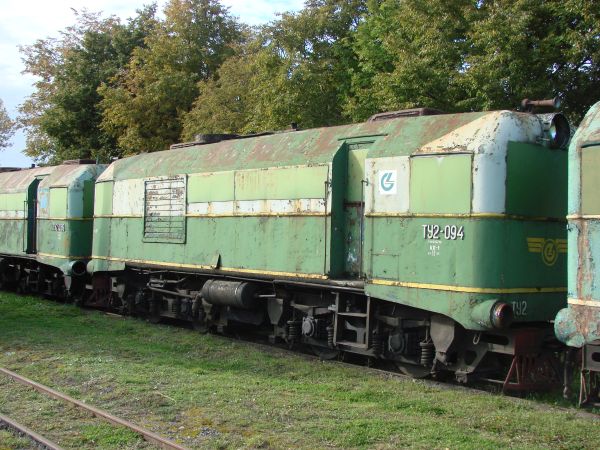
In 2007 there was just a long line of old TU2 locomotives with Soviet time texts and paintings rusting by a siding and nothing was
moving. Picture 16.9.2007 in Panevėžys by Ilkka Siissalo.
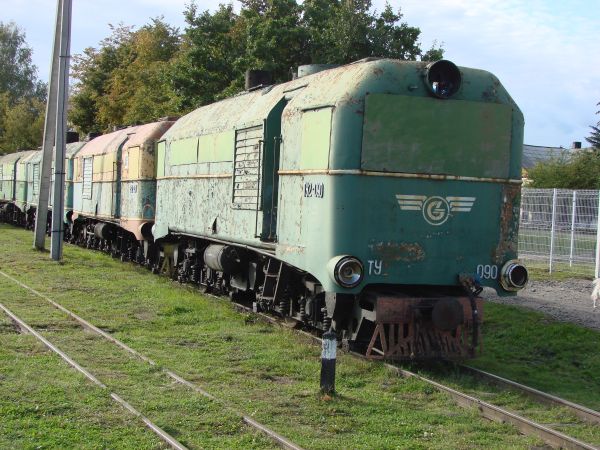
In 2007 I would have never believed that 10 years later three of these locomotives would be operational again. The locomotive in front,
TU-2 no.090 was actually renovated and repainted and then again abandoned. See its picture in the year 2020 higher up on this same page.
Picture 16.9.2007 from Panevėžys by Ilkka Siissalo.
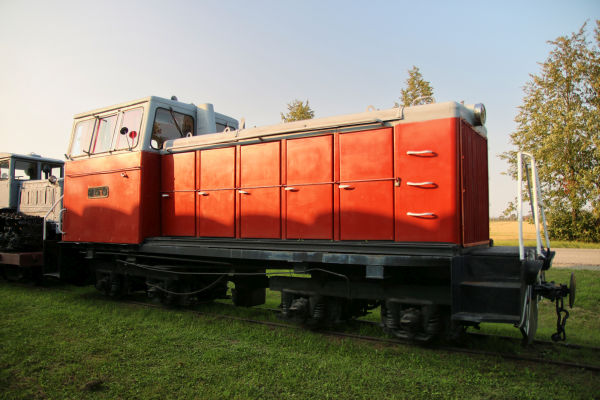
This TU-8 locomotive is still in a seemingly fairly good condition. It has been repainted and set up for display at Joniškėlis together with
wagons loaded with T74 tractors. Those tractors were a further development of military tanks and they were used for example while collecting
peat from peat production bogs and swamplands. The locomotive type TU-8 is actually fairly modern. They were built for 750mm and 1067mm gauge
tracks by the Kambarka Engineering Works in former Soviet Union since 1988. It was intended as a shunter engine.
Picture from Joniškėlis 12.9.2020 by Andrius Sarkauskas.
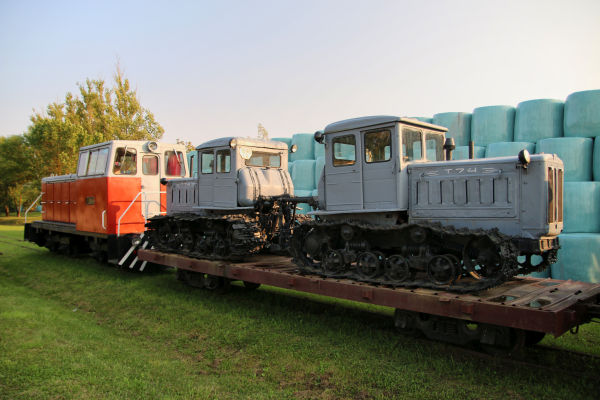
The same TU-8 locomotive as above with two of the T74 tractors. The train has been parked on display with five flat wagons loaded with nine
of these tractors.
Picture from Joniškėlis 12.9.2020 by Andrius Sarkauskas.
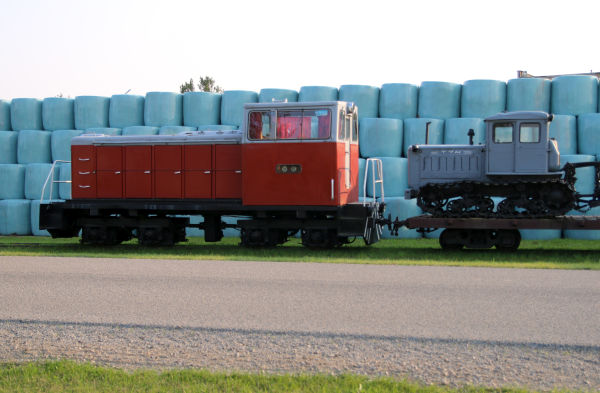
Still the same TU-8 locomotive as above but seen from its side. Note the fairly rare mechanical power transmission system from the locomotive's
engine to the bogies.
Picture from Joniškėlis 12.9.2020 by Andrius Sarkauskas.
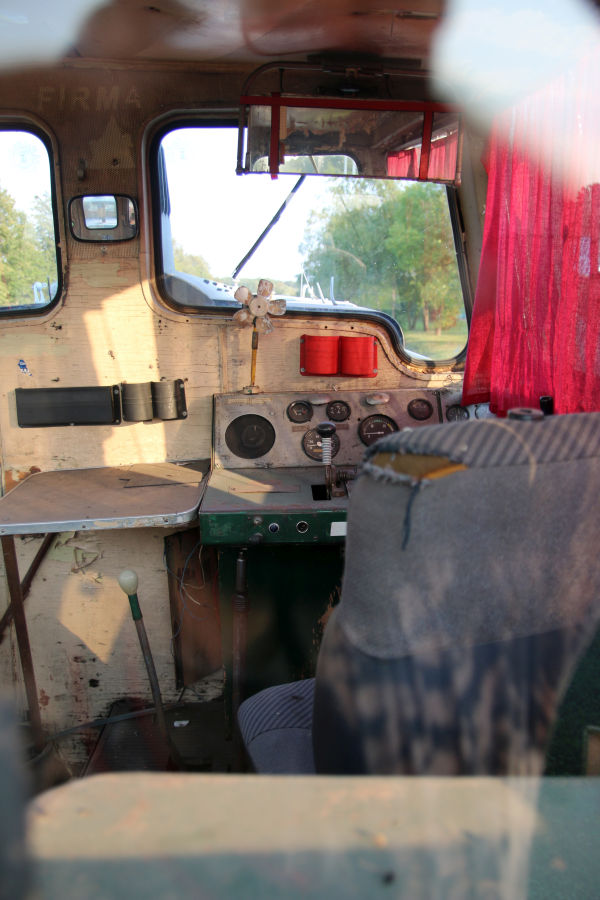
Driver's cab of the same TU-8 locomotive as above.
Picture from Joniškėlis 12.9.2020 by Andrius Sarkauskas.
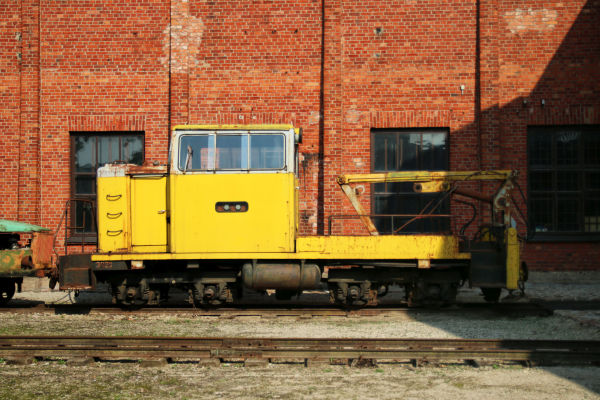
This narrow gauge rail truck of the type TU-8G was a further development from the successful TU-8 locomotive shown above. They were built
by the Kambarka Engineering Works since 1988 and have been used in Russia, Belarus, Ukraine and Guinea.
Picture from Panevėžys 12.9.2020 by Andrius Sarkauskas.
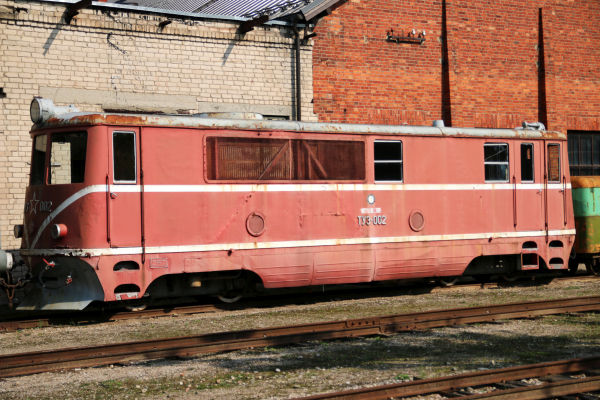
This TU-3 narrow gauge line diesel was mainly used to pull passenger trains on the then numerous narrow gauge lines of the Baltic
states of the Soviet Union. This machine was built in 1957 in Praha (Prag/Prague) in what then was Czechoslovakia. This locomotive
used to belong to the Estonian narrow gauge museum, Eesti Muuseumraudtee, near Lavassaare, Estonia, but it has now in 2020 been moved
over to Panevėžys, probably for refurbishing.
Picture from Panevėžys 12.9.2020 by Andrius Sarkauskas.
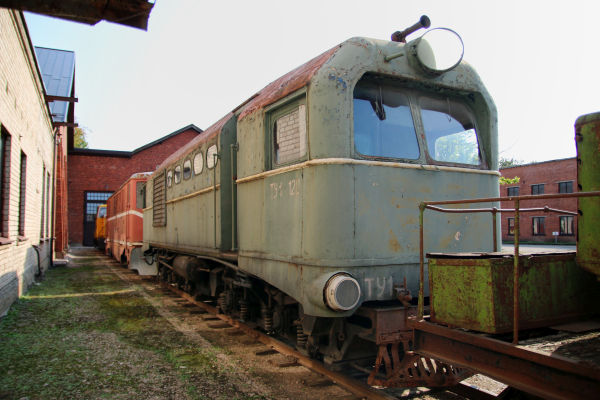
After the second world war Soviet Union wanted to start modernising its railways by getting rid of steam engines and replacing them with
modern diesels. The very first narrow gauge diesel locomotive type ever built in the USSR was the TU-1 built in 1954. TU-1 model was not
a success and only two locomotives of this type were ever built, before an improved type, the TU-2 was constructed. This locomotive shows
on its outside the markings of TU-1, but unfortunately it's a fake, made for a movie. TU-1 and TU-2 did actually very much resemble each
other, so this faked "TU-1" may have been very trustworthy in its movie role. But sadly enough, this machine is a TU-2, no matter what
it says on the outside.
Picture from Panevėžys 12.9.2020 by Andrius Sarkauskas.
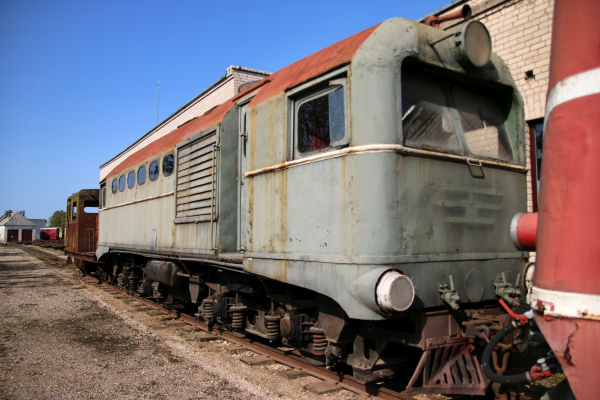
The same fake "TU-1" as above, seen from the other side.
Picture from Panevėžys 12.9.2020 by Andrius Sarkauskas.
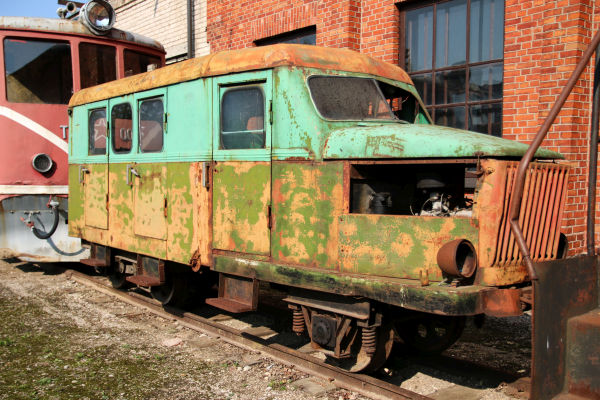
Soviet Russian narrow gauge railcar of the type PD-1. These were mainly used for transporting track maintenance works workers to the site which
needed improvement. To see more pictures of this same type, see our site Estonia >
Lavassaare narrow gauge museum.
Picture from Panevėžys 12.9.2020 by Andrius Sarkauskas.
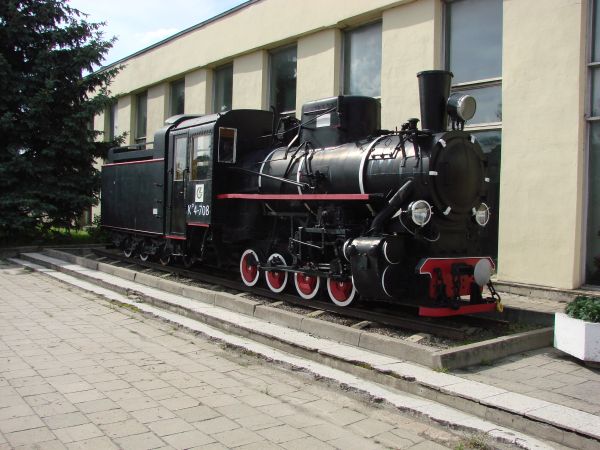
Until 1960s the most common narrow gauge locomotive type in Lithuania - like in most other parts of USSR as well - was this type,
in Lithuania known as Kp4. They were built after the second world war in many countries, including Finland, Czechoslovakia, Hungary
and USSR and were common throughout the eastern block. For more pictures and information of this locomotive type, see archive category
Latvia -> narrow gauge. When this picture was taken in 2007 this locomotive was still standing as a monument in front of the Panevėžys
station, but it is there no more. This individual had been built in Chrzanow in Poland in 1957.
Picture 4.7.2007 in Panevėžys by Ilkka Siissalo.

The rusty old Soviet narrow gauge locomotive in the front of the picture is a Soviet ESU-2, though it may look a little bit odd to
those who know old Soviet narrow gauge machines. The most common variant of the ESU-2, ESU2a had a shorter "nose" and in front of
the engine cupboards there was a powerful winch. These machines were created and used by the troops in timber works. The machine had
enough seats for roughly ten workmen and it was powerful enough to haul heavy logs away from the forests. These machines were built
1972 to 1988 by the Gubinsky Machine Works for 750mm gauge forest railroads and 1034 locomotives were made and used throughout the
huge Soviet Union. It looks like this one probably belongs to the subtype ЭСУ2Б (ESU2b)
The rusty machine on the left is yet another TU-2 locomotive.
Picture from Panevėžys 12.9.2020 by Andrius Sarkauskas.
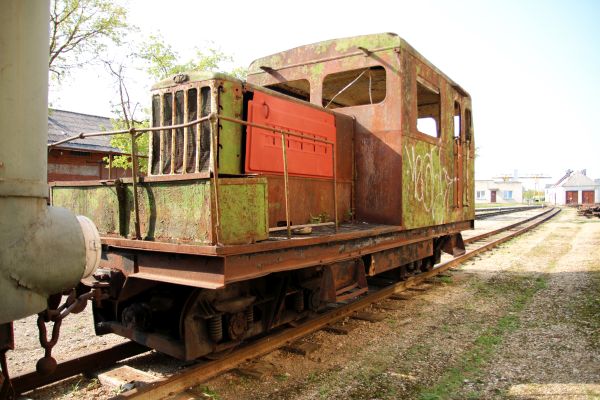
We don't know for sure what this old, rusty locomotive is, but it could be a precursor or prototype of the well published Soviet Russian
type ESU3 built by Gubinskiy Machine Works 1981-82. But according to Wikipedia, Gubinskiy even then only built three machines.
This one clearly differs in many details from the published pictures of ESU3 locomotives and looks in some details a bit older, but
on the other hand no other published Soviet narrow gauge machine comes even close.
Picture from Panevėžys 12.9.2020 by Andrius Sarkauskas.
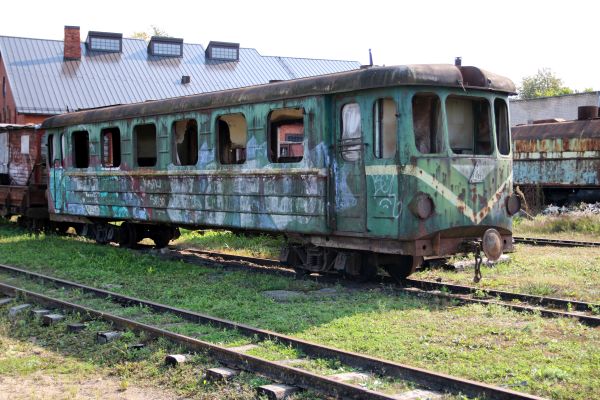
This old thing is - or rather WAS - a narrow gauge railbus of the Soviet Russian type AM-1. AM-1 railbuses were built in nearly 300
copies by the Demikhovsky Machine-building plant 1962 to 1972 for the Soviet 750mm gauge railroads. In the Baltic states they were quite
common and much used for example on the Estonian narrow gauge lines.
Picture from Panevėžys 12.9.2020 by Andrius Sarkauskas.

